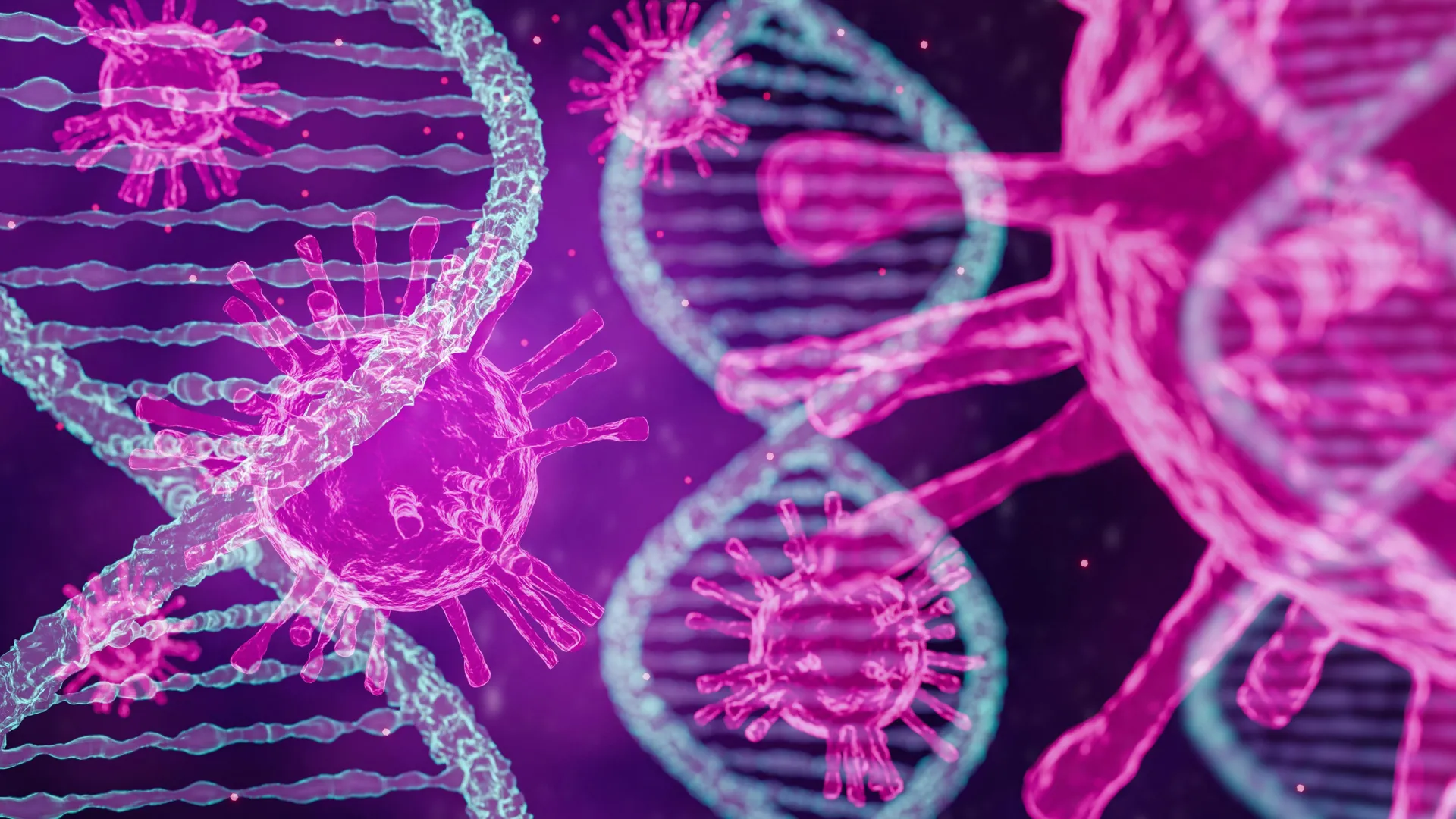Hidden gene in leukemia virus could revolutionize HIV treatment
Newly identified “viral silencer” explains HTLV-1’s stealth infection strategy; potential applications for HIV therapy.
- Date:
- August 2, 2025
- Source:
- Kumamoto University
- Summary:
- Scientists in Japan have discovered a genetic "silencer" within the HTLV-1 virus that helps it stay hidden in the body, evading the immune system for decades. This silencer element essentially turns the virus off, preventing it from triggering symptoms in most carriers. Incredibly, when this silencer was added to HIV, it made that virus less active too — hinting at a revolutionary new strategy for managing not just HTLV-1 but other deadly retroviruses as well. The discovery opens the door to turning the virus’s own stealth tactics against it in future treatments.
- Share:

A research team from Kumamoto University has made a groundbreaking discovery that reveals how the human T-cell leukemia virus type 1 (HTLV-1) silently persists in the body, potentially laying the foundation for new therapeutic approaches. Their findings, published on May 13, 2025, in Nature Microbiology, identify a previously unknown genetic "silencer" element that keeps the virus in a dormant, undetectable state.
HTLV-1 is a cancer-causing retrovirus known to lead to adult T-cell leukemia/lymphoma (ATL), an aggressive and often fatal disease. Although most infected individuals remain asymptomatic for life, a fraction eventually develops leukemia or other inflammatory conditions. The virus achieves long-term persistence by entering a "latent" state, during which its genetic material hides inside the host's genome with minimal activity -- evading immune detection.
In this study, the research team, led by Professor Yorifumi Satou from the Joint Research Center for Human Retrovirus, Kumamoto University, identified a specific region within the HTLV-1 genome that functions as a viral silencer. This sequence recruits host transcription factors, particularly the RUNX1 complex, which suppresses the virus's gene expression. When this silencer region was removed or mutated, the virus became more active, leading to greater immune recognition and clearance in lab models.
Remarkably, when the HTLV-1 silencer was artificially inserted into HIV-1 -- the virus that causes AIDS -- the HIV virus adopted a more latent-like state, with reduced replication and cell killing. This suggests that the silencer mechanism could potentially be harnessed to design better therapies for HIV as well.
"This is the first time we've uncovered a built-in mechanism that allows a human leukemia virus to regulate its own invisibility," said Professor Satou. "It's a clever evolutionary tactic, and now that we understand it, we might be able to turn the tables in treatment."
The findings offer hope not only for understanding and treating HTLV-1, especially in endemic regions like southwestern Japan, but also for broader retroviral infections.
Story Source:
Materials provided by Kumamoto University. Note: Content may be edited for style and length.
Journal Reference:
- Kenji Sugata, Akhinur Rahman, Koki Niimura, Kazuaki Monde, Takaharu Ueno, Samiul Alam Rajib, Mitsuyoshi Takatori, Wajihah Sakhor, Md Belal Hossain, Sharmin Nahar Sithi, M. Ishrat Jahan, Kouki Matsuda, Mitsuharu Ueda, Yoshihisa Yamano, Terumasa Ikeda, Takamasa Ueno, Kiyoto Tsuchiya, Yuetsu Tanaka, Masahito Tokunaga, Kenji Maeda, Atae Utsunomiya, Kazu Okuma, Masahiro Ono, Yorifumi Satou. Intragenic viral silencer element regulates HTLV-1 latency via RUNX complex recruitment. Nature Microbiology, 2025; 10 (6): 1447 DOI: 10.1038/s41564-025-02006-7
Cite This Page: